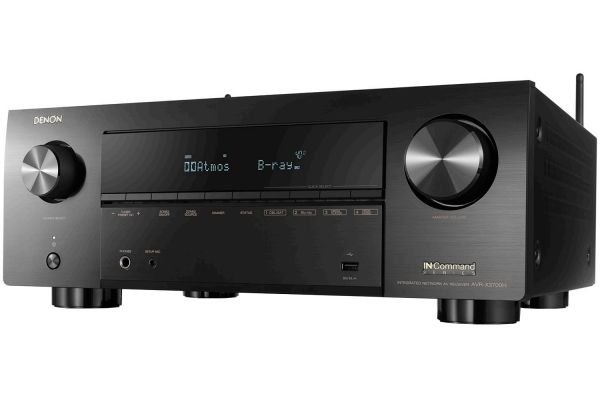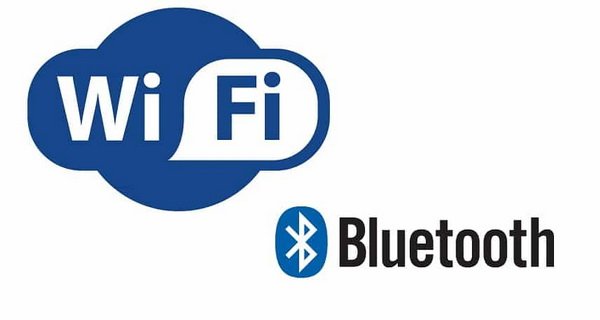Out of many ways to get the projector’s sound to the speakers, most of them depend on your setup or your budget. Nonetheless, all of those options can be summarized into the three major categories or types of connection: analog, digital or wireless. Furthermore, your choice for connection may depend on your AV source, as we will see down below. So let’s get started.
Page Contents
Analog connections
Suppose you have analog audio ports on your projector, and you are using a stereo system of some sort. In that case, you can connect them through either RCA cable or 3,5mm AUX cable, depending on the available ports.

Let’s say you don’t want to, or you can’t, connect your stereo system to your projector directly. You can connect your speakers to your AV signal source. Whether it’s a PC or a laptop, you can get the video to the projector through HDMI, VGA or other, available port. And then send audio to the stereo system using 3,5mm audio out on your computer.
Option number three would be the use of an HDMI audio splitter. Place this device between your PC on one and your projector and stereo system on the other end. It will split the signal sending digital video to the projector and analog audio to the stereo system.
All these options will work just fine but keep in mind that these will give you only stereo sound. If you want to have a better-sounding setup, you need to go digital.
Digital connections
The best option to get the full sound is Audio Video Receiver or AVR for short. You can use it as a “middle man” between your signal sources, projector, and speakers. All you need to do is plug your TV box, PC, game console, or other devices into the AVR. Then use an HDMI cable to send the video signal to the projector while having your speakers connected to the AVR itself. This option is probably the most expensive, but it will give you the best results since you will get full surround sound and all your AVR-supported standards.

Wireless/Bluetooth
These days no one wants to mess with the cables anymore. You may not get the best possible quality of sound if you choose to go wireless. Still, you will avoid tripping over wires or figuring out creative ways to conceal them all over your room.
So what kind of options is there?
The most obvious solution is to buy one of the out-of-box solutions that include a projector supporting both Wi-Fi and Bluetooth and a screen with a built-in soundbar.

Going for an integrated, prebuilt solution will solve all your problems at one go, but what if you already have a projector, or some audio system, or both, and you don’t want to give them up yet?
- Your projector has Bluetooth, but your sound system doesn’t
In this case, you can buy a little, useful gadget called a Bluetooth receiver. This device becomes your Bluetooth support. It receives a wireless signal, then sends it through the wire. Just connect it to your audio system using available analog cables (3,5mm aux or RCA). Just make sure your Bluetooth receiver is placed in a good position within the projector’s direct visual range. Bluetooth can be tricky with physical obstacles. They can sometimes create latency or loss of signal between the connected devices.
- Your Audio system supports Bluetooth, but your projector does not.
Since Bluetooth has become so widely spread standard, there is a device solution for almost any imaginable situation and problem. If your projector doesn’t support Bluetooth, but your sound system does, use a Bluetooth transmitter device. There are many suitable devices on the market, and prices are in an affordable range. You connect this device to your audio out port on your projector and then pair it up with your audio system.
- Your projector supports Bluetooth, but you don’t have an audio system and want to use Bluetooth.
In this case, go and buy Bluetooth speakers or a pair of speakers if your projector supports Bluetooth 5 standard. Just make sure that it does because only Bluetooth 5 supports simultaneous streaming to two separate devices. You can even buy a pair of smart, Bluetooth speakers such are the ones from the Amazon Echo family and then pair them with each other to create a stereo pair.
- Your projector doesn’t support Bluetooth, and you don’t have a sound system but want to use Bluetooth.
There are few good options for how to do this by using products like Amazon Fire Stick. Amazon Fire Stick is a streaming device that connects to your Wi-Fi and uses the internet to provide you content. It requires a good Wi-Fi signal and high internet speed to work properly. You can plug it in your projector using an HDMI port and use it as your signal source if you have both. The latest models support Bluetooth 5, so you can buy one or two Bluetooth speakers and stream to them directly from the Stick.
Summary
The type of connection between a projector and your speakers depends on the available ports and budget.
For stereo sound, you can use 3,5 aux cable or RCA (depending on what you have). Still, suppose you want a better sound experience or surround sound. In that case, you need to use some type of digital connection, most commonly HDMI. In that case, you will need an AVR or soundbar that will serve as a middle man to pass through video to the projector and audio to the speakers.
If you don’t want to mess with the cables, even if it means not having the best possible sound, use Wi-Fi or Bluetooth.
In case your projector doesn’t support Bluetooth, but the sound system does, or you have a Bluetooth
Whatever the setup you have available, there should be a way to connect your projector to your speakers and make it work. We hope you find our list of options and recommendations helpful and that it lit the spark of an idea of how to make your setup work.

